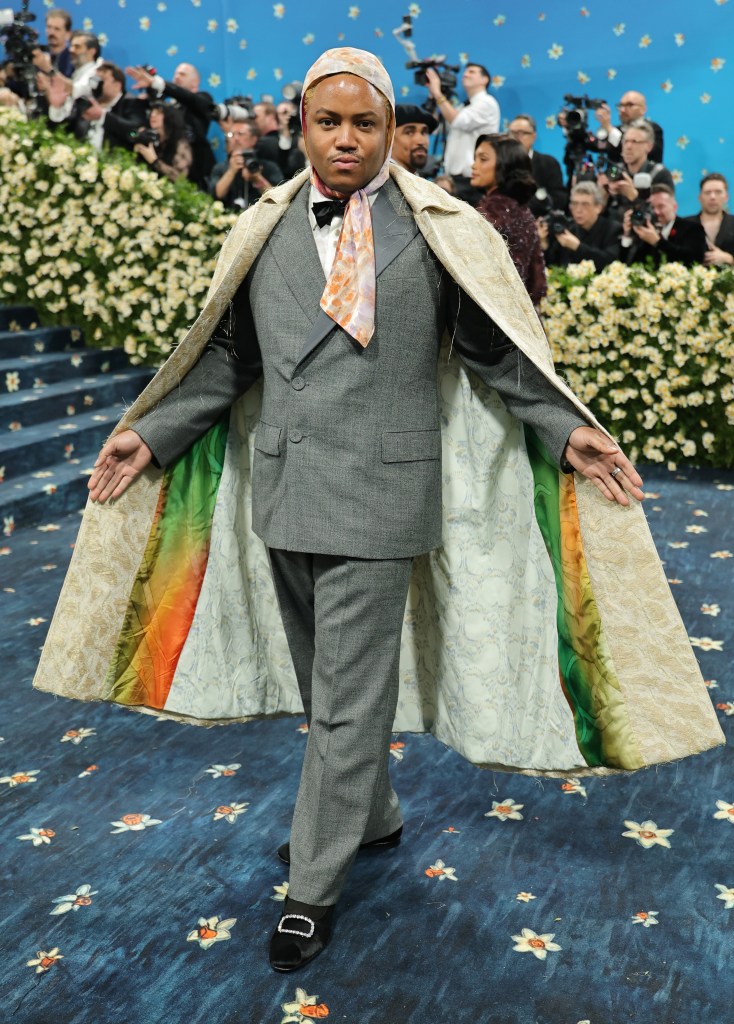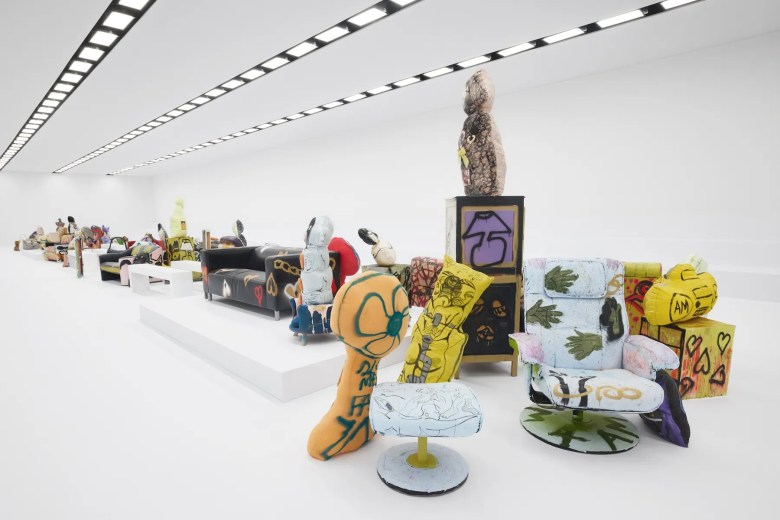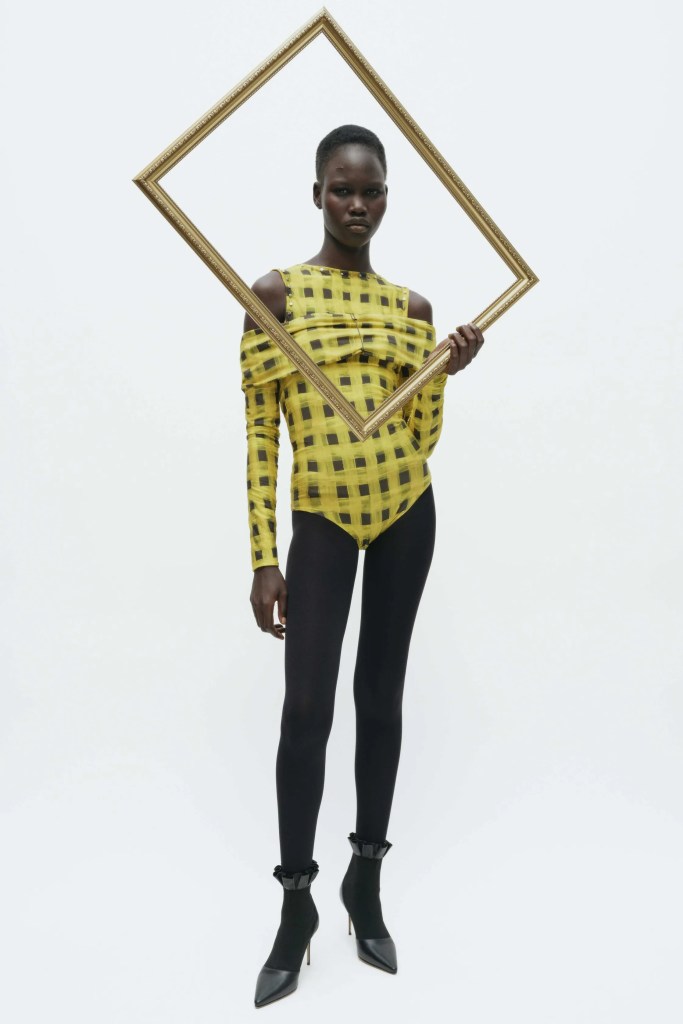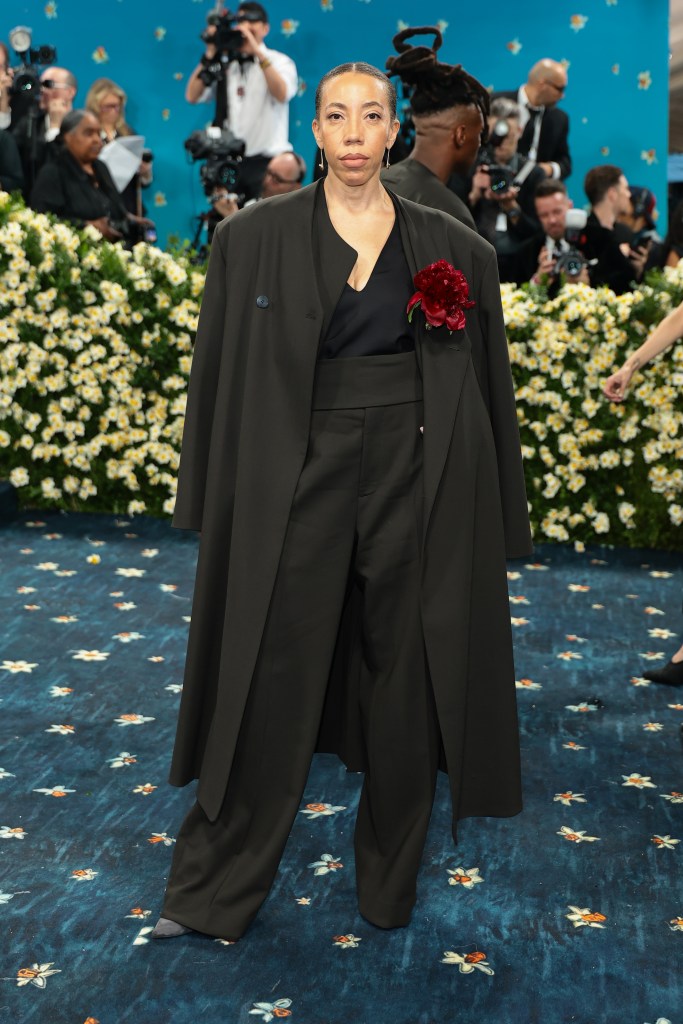With the 2025 Met Gala behind us, what better time to examine the deepening, ever-fluid relationship between fashion and fine art? On the magnolia-draped steps of The Metropolitan Museum of Art, the interplay was striking as the lines between artist and muse blurred into stylish abstraction.
With the 2025 Met Gala behind us, what better time to examine the deepening, ever-fluid relationship between fashion and fine art?

Fresh off the opening of his major survey at the Guggenheim and a recent Harper’s Bazaar cover, Rashid Johnson arrived in custom Tory Burch. Baltimore’s own Amy Sherald wore Fear of God, as did Arthur Jafa. Jordan Casteel and Ming Smith, two generations of Black lens-based and painterly brilliance, stunned in Harbison Studio. Torkwase Dyson, who designed the space for this year’s costume exhibition, arrived in a custom JW Anderson ensemble. Maryland’s own multidisciplinary visionary, Eric N. Mack, brought texture and color in Wales Bonner. Henry Taylor, the artist tapped to paint Pharrell for Vogue’s Met issue (a full-circle moment considering their collaboration at Pharrell’s debut Louis Vuitton show), arrived in custom Louis Vuitton.
This convergence of sartorial brilliance and artistic might culminated in the Costume Institute’s spring exhibition, “Superfine: Tailoring Black Style.” A Barkley Hendricks portrait is next to a kufi, threading together the legacies of Black dandyism through the lenses of designers like Theophilio and iconoclast Dapper Dan, situating art and style in constant, intertwined dialogue.
Of course, the flirtation between fashion and fine art is far from new. Think Elsa Schiaparelli’s surrealist flings with Salvador Dalí; Willi Smith’s pop-infused Keith Haring capsule in the ’80s; Marc Jacobs inviting Richard Prince’s irreverent nurses into the Louis Vuitton fold; or Raf Simons x Sterling Ruby for his first Dior Women collection in 2012. Fashion and fine art have always existed in tandem. But what feels distinct now is how holistic, fluid, and mutual these partnerships have become. The 21st century has only amplified the dialogue between fashion houses and contemporary artists.
It’s not just that fashion is referencing art; it’s embedding artists, their mediums, and even their physical presence into the very framework of runway presentation. Following last year’s Spring/Summer 2025 shows — think Acne Studios’s atmospheric set design by artist Jonathan Lyndon Chase, Simone Rocha’s moody nod to Genieve Figgis, and Off-White’s textural collaboration with Ghanaian artist Nana Danso — this past season doubled down on the intersection of fine art and fashion. Across menswear, couture, and ready-to-wear, brands embraced the gallery as runway and vice versa. At Dior Couture SS25, Maria Grazia Chiuri tapped Mumbai-based artist Rithika Merchant to transform the show space into a hand-painted sanctuary of celestial motifs.

For Fall/Winter 2025, British designer and MoMA guest curator Grace Wales Bonner delivered a cerebral, beautifully restrained menswear collaboration with Theaster Gates, built around “The Black Image Corporation,” Gates’s archival excavation of the Ebony and JET photography vaults. Jacquemus staged its SS25 show inside famed architect Auguste Perret’s Paris apartment, with sculptures by Aristide Maillol nestled between minimalist silhouettes. Yohji Yamamoto invited Belgian painter Luc Tuymans to walk the FW25 runway — one of many artist cameos this season, including Rashid Johnson at Rosetta Getty.
In New York, Christopher John Rogers lit up the FW25 schedule with a punchy palette and visual cues pulled from Angela de la Cruz’s crumpled canvases and the Pop gloss of Roy Lichtenstein. Ulla Johnson’s poetic bent manifested in a set designed by French sculptor Julie Hamisky — oversized, surrealist florals blooming between the clothes. In London, Erdem adorned gowns with the romantic brushstrokes of Kaye Donachie, while Roksanda’s vision was steeped in the sculptural language of the late Phyllida Barlow. London-based brand Feben Fall/Winter 25 lookbook was inspired by Lorraine O’Grady’s “Art Is…” series.

Meanwhile, in Paris, Issey Miyake incorporated Erwin Wurm’s conceptual play, and Alaïa’s sculptural FW25 collection felt in conversation with Mark Manders’ architectural quietude and Simone Leigh’s commanding femme forms.
Vaquera, ever the cool kids on the schedule, went full Warholian for Fall/Winter 2025 — designers Bryn Taubensee and Patric DiCaprio riffed on ’80s downtown excess with denim emblazoned with Andy Warhol’s iconic “Marilyn Monroe” screen prints in partnership with The Andy Warhol Foundation. Other notable pairings this season included Kenzo and Futura, KidSuper and Daniel Wurtzel, Bianca Saunders and Steven Parrino, advertising, like a Saint Laurent campaign featuring painted interpretations of the FW25 collection by Francesco Clemente — known for his emotional, often erotic portraiture and polarizing collabs with brands like Supreme and the estate of Ernie Barnes.
You can’t discuss the current art-fashion renaissance without citing Jonathan Anderson’s wildly referential tenure at Loewe. Anderson has long used the Spanish house as a vessel for cultural curation, fusing fashion with the work of artists like Lynda Benglis, Maruja Mallo, and Richard Hawkins. His runways are as informed by Frieze as they are by fabric. After last season’s visual references to Vincent Van Gogh’s “Sunflowers” and a Manet-printed tee, Anderson’s FW25 collection played like a retrospective: garments in direct conversation with collaborators like Anthea Hamilton and Rachel Harrison, a meditation on texture, tension, and taste.
In today’s hyper-visual culture, where cultural capital is often mediated by what’s worn, where, and by whom, fashion becomes a critical lens through which we can read and interpret the art world — and vice versa. This moment also marks a shift in who gets to frame these narratives.
This larger moment is mirrored in the exhibitions these artists are simultaneously helming. Amy Sherald’s “American Sublime” at the Whitney, her debut New York museum solo, is a masterclass in portraiture and fashion as self-making. Her grayscale figures, often adorned in bold patterns, become avatars of memory, cool, and quiet power. Sherald wore custom Harbison Studio for her opening — a subtle loop between subject, style, and setting. Rashid Johnson’s “A Poem for Deep Thinkers,” up now at the Guggenheim, not only surveys two decades of his deeply textured practice, but also became a stage for Grace Wales Bonner’s activation “Togetherness,” blurring the lines between gallery and runway, installation and invitation. And in today’s hyper-visual culture, where cultural capital is often mediated by what’s worn, where, and by whom, fashion becomes a critical lens through which we can read and interpret the art world — and vice versa. This moment also marks a shift in who gets to frame these narratives.


Artists like Johnson, Sherald, and Mack aren’t simply collaborating — they’re commanding space in both industries, on their terms. The intersection of art and fashion is being increasingly shaped by Black, brown, and queer creatives who see no need to separate their aesthetics from their politics. Their presence at the Met, on the runway, and in the ateliers isn’t just symbolic — it’s structural. The runway, then, becomes more than a space for debuting collections. It transforms into an exhibition in motion — a place where brushstrokes are translated into silhouettes, where conceptual theory meets commercial aspiration. Whether it’s a sculpture reimagined as a dress or a painting reborn as a print, fashion is increasingly performing the work of art.
Art and fashion have always been in conversation. But right now, they’re speaking louder, more fluently — in bolder colors, on bigger stages, and with a broader vocabulary of collaborators.
Art and fashion have always been in conversation. But right now, they’re speaking louder, more fluently — in bolder colors, on bigger stages, and with a broader vocabulary of collaborators. The runway is no longer just a platform for clothes; it’s a canvas for cultural storytelling, where brushstrokes, silhouettes, and history all walk in tandem. In 2025, fashion didn’t just imitate art. It became art.
Shelton Boyd-Griffith is a fashion and culture editor based between St. Louis and New York City. His work explores the intersections of fashion, art, and pop culture, with a sharp focus on storytelling and cultural commentary. He is a regular contributor to publications including Vogue, Harper’s Bazaar, Teen Vogue, Complex, BET, Ebony, and Netflix.
